Abstract
Nigg, Clara (University of California, Berkeley), and Margaret M. Johnston. Complement fixation test in experimental clinical and subclinical melioidosis. J. Bacteriol. 82:159–168. 1961.—Soluble stable antigens prepared from Pseudomonas pseudomallei gave 4+ complement fixation reactions in a dilution of 1 to 8,000 when tested with specific rabbit antiserum diluted 1 to 10,000.
The complement fixation reaction was positive in 100% of experimentally infected rabbits 9 to 11 days postinfection. Infected guinea pigs and monkeys showed similar results.
Monkeys inoculated with very small infecting doses of P. pseudomallei developed positive complement fixation reactions in the absence of clinical manifestation of infection. An anamnestic complement-fixing antibody response could be induced in such monkeys, after the titer had dropped to approximately the preinfection level, by inoculating very small doses of viable P. pseudomallei or larger doses of killed melioidosis vaccine.
The complement fixation test described appeared to be both sensitive and specific, and should be of value in human melioidosis which cannot be diagnosed on the basis of clinical manifestations alone.
It is suggested that subclinical infections may play a role in the epidemiology of human meliodosis. The potential application of the complement fixation test to serological surveys in areas where melioidosis occurs endemically is discussed.
Full text
PDF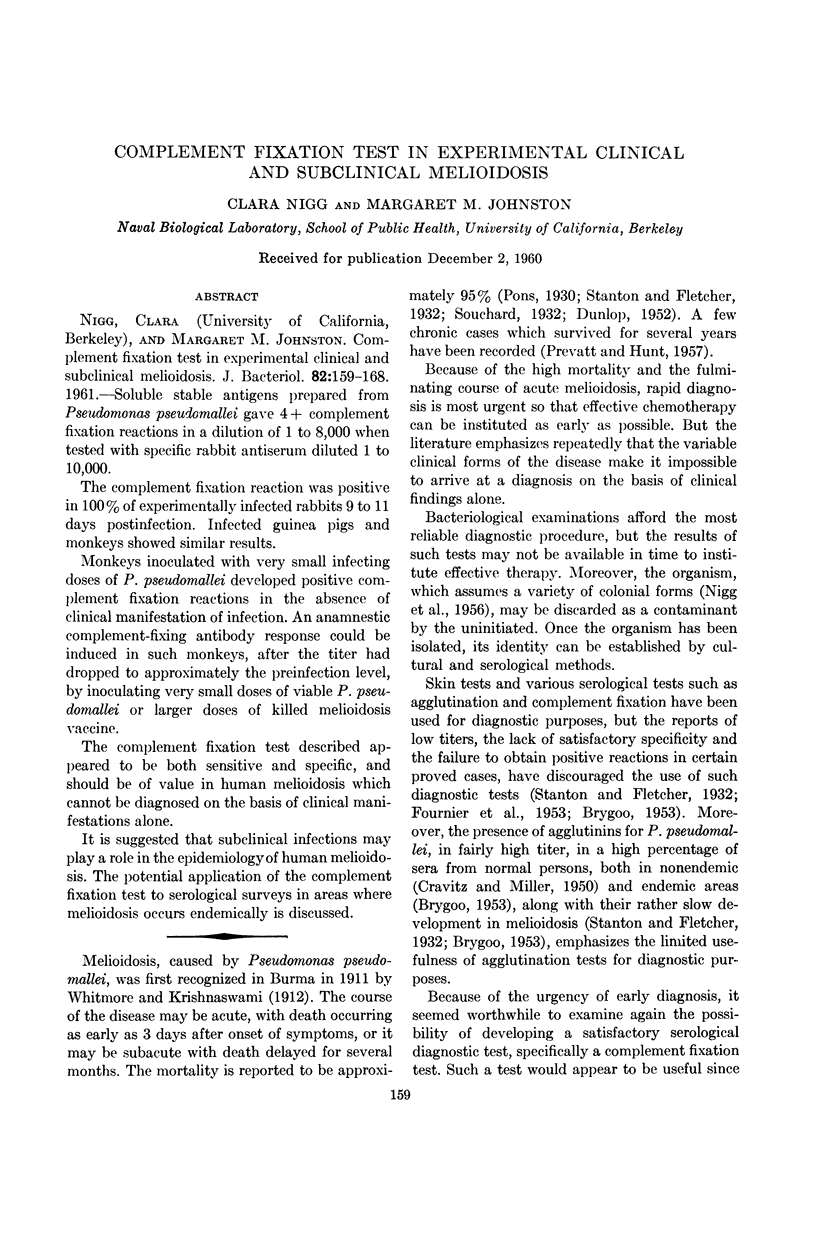
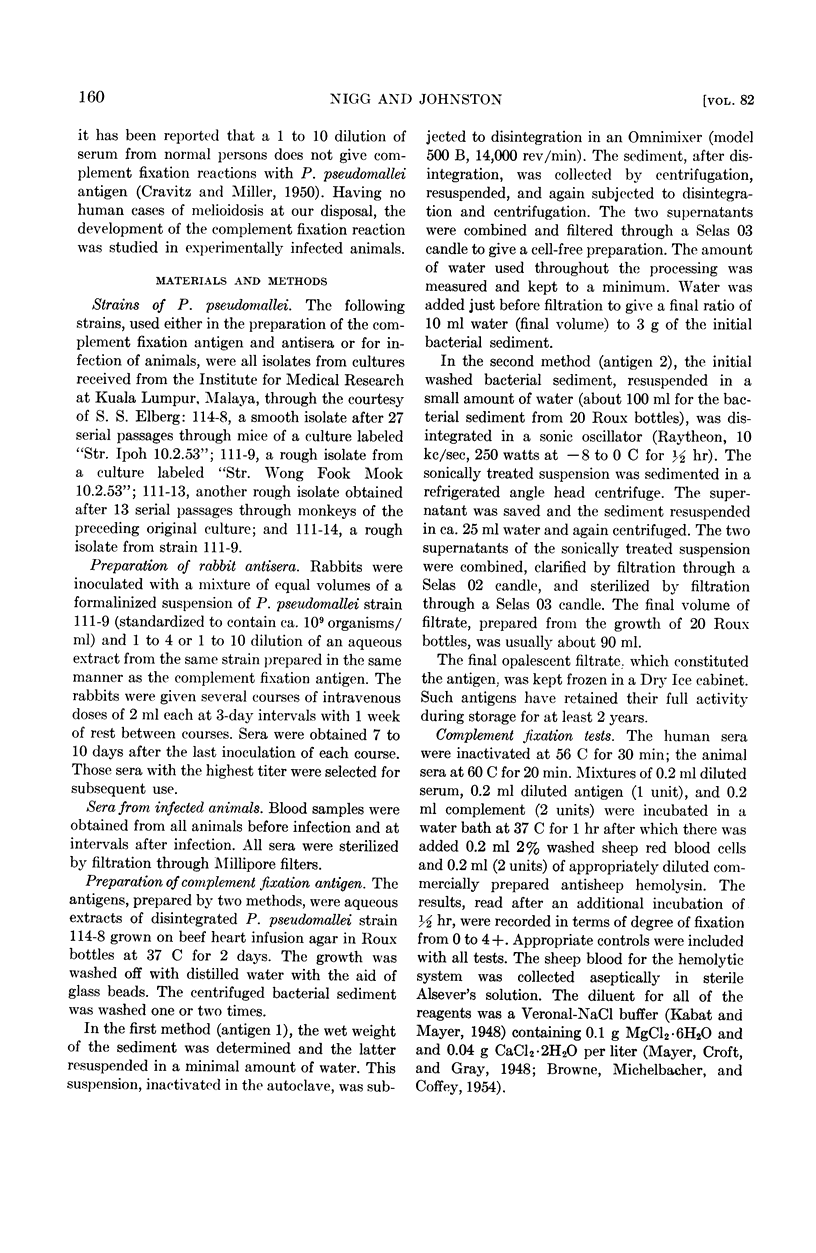
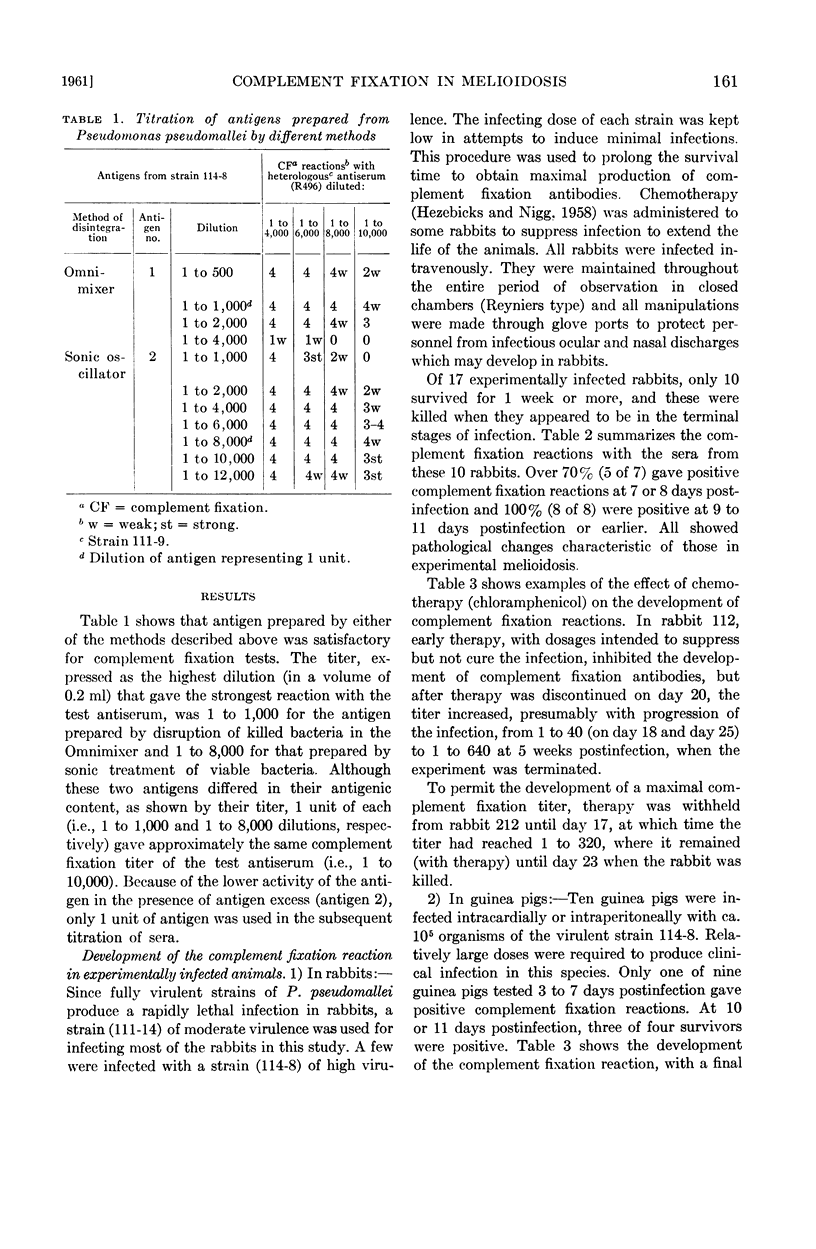
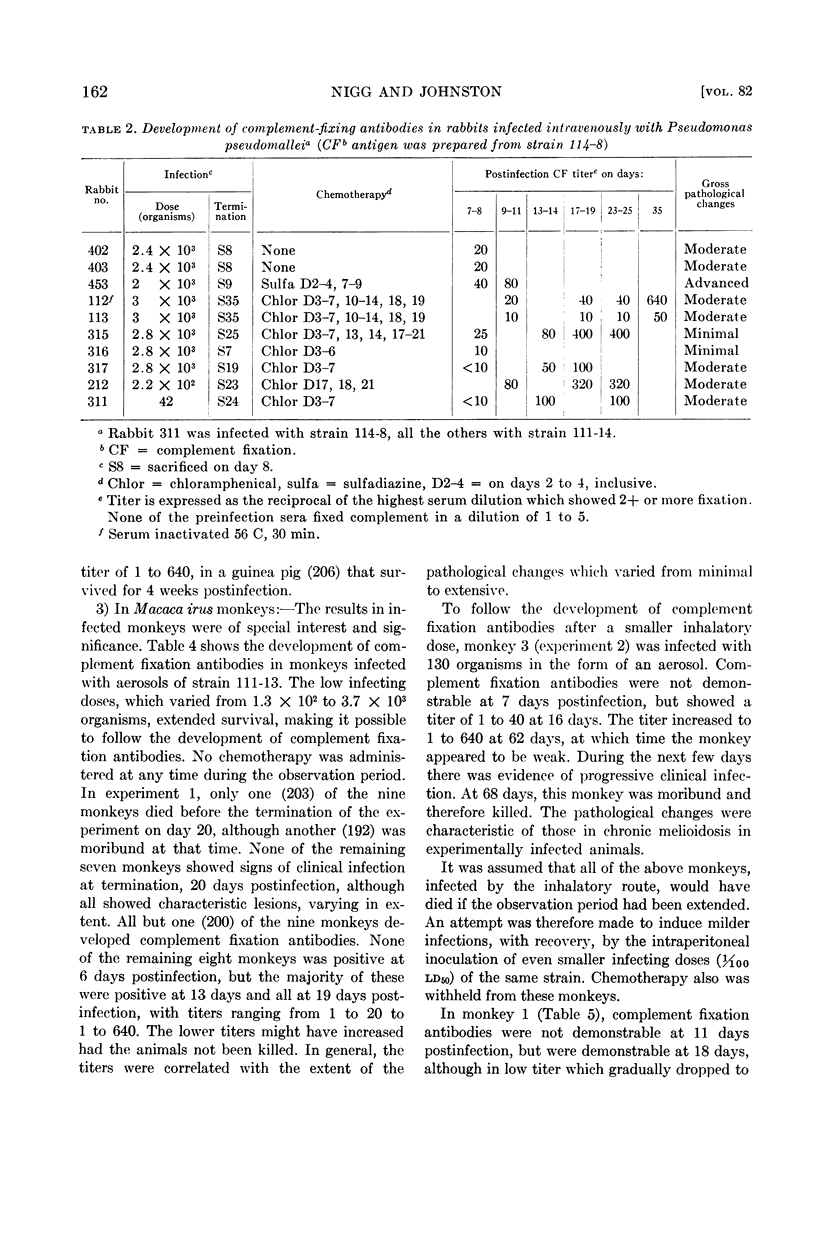
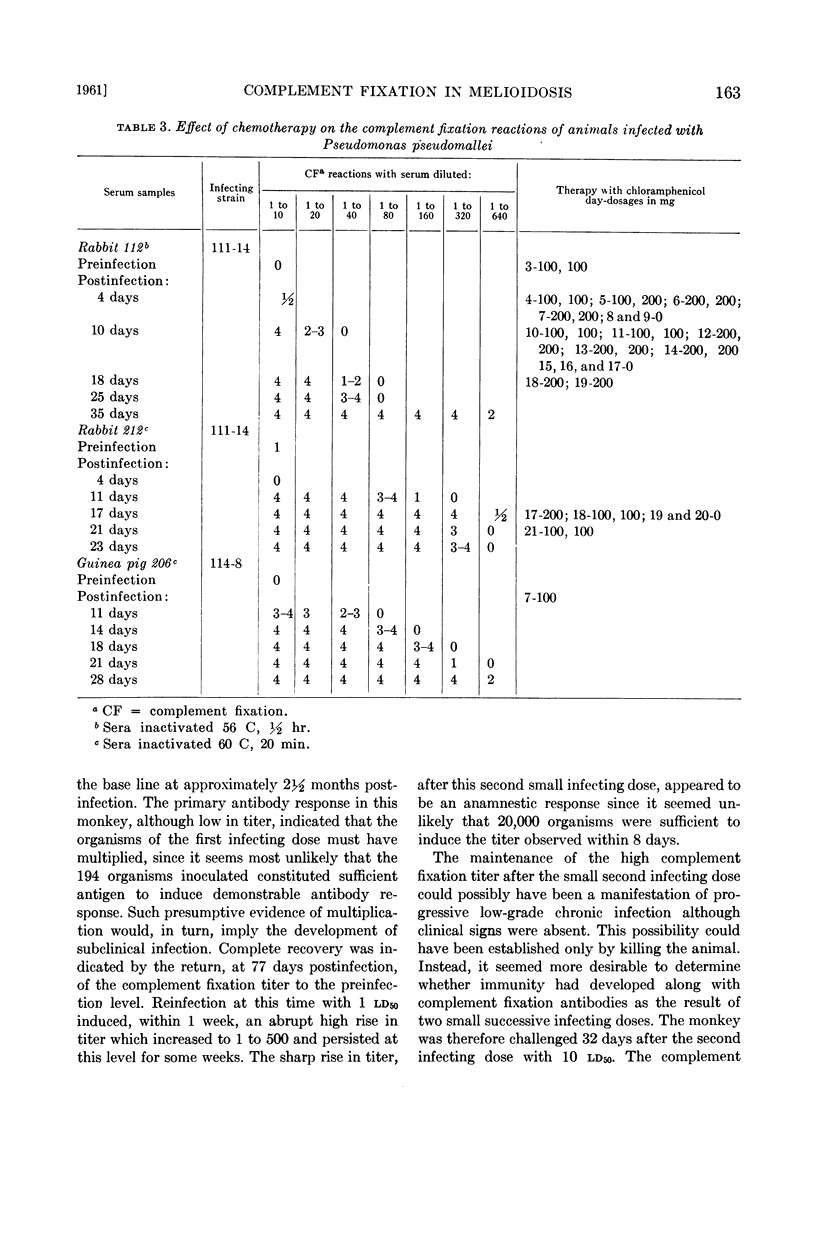
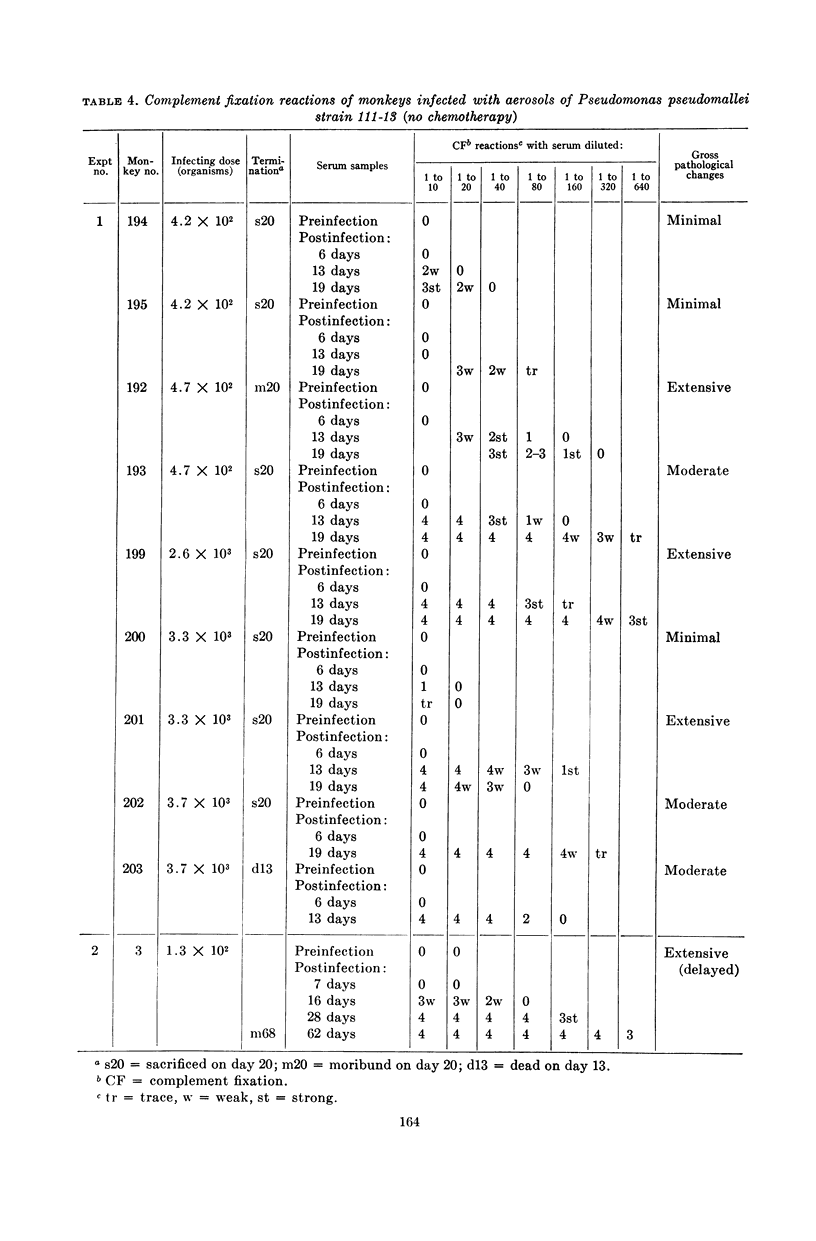
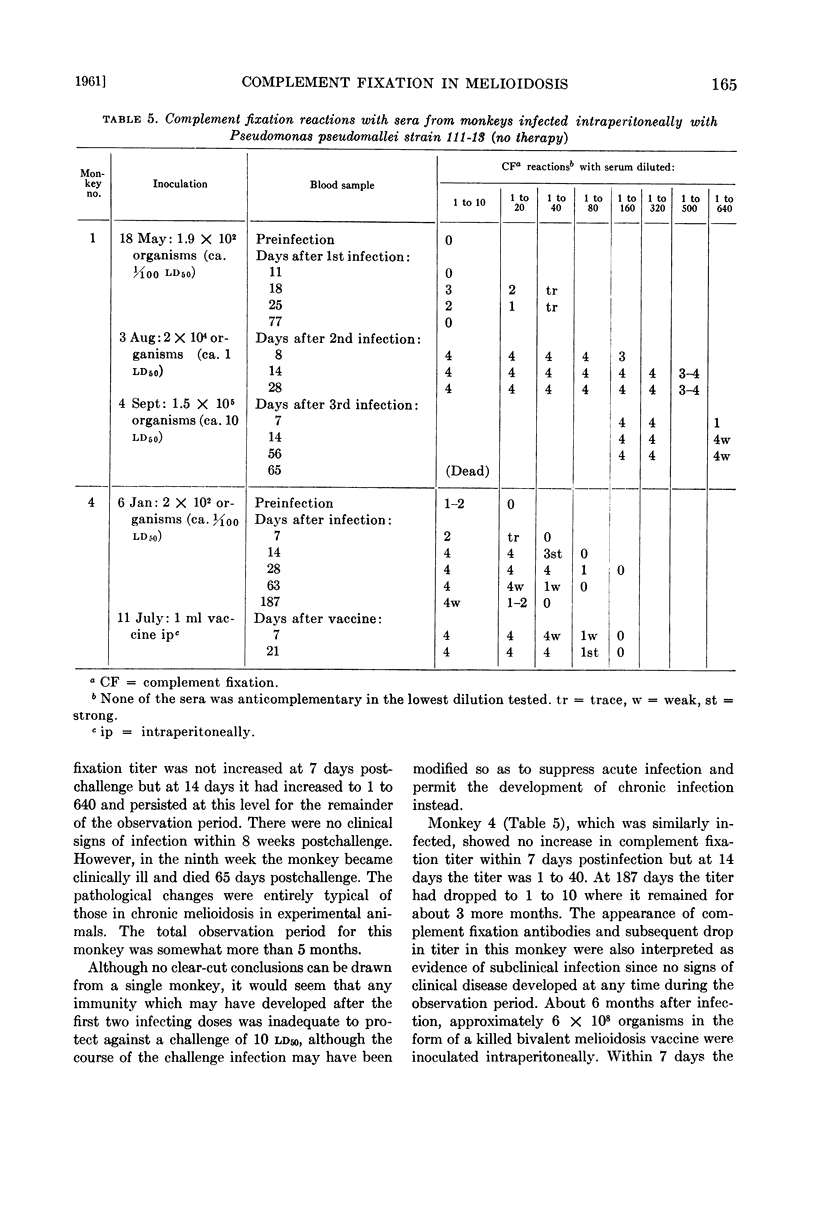
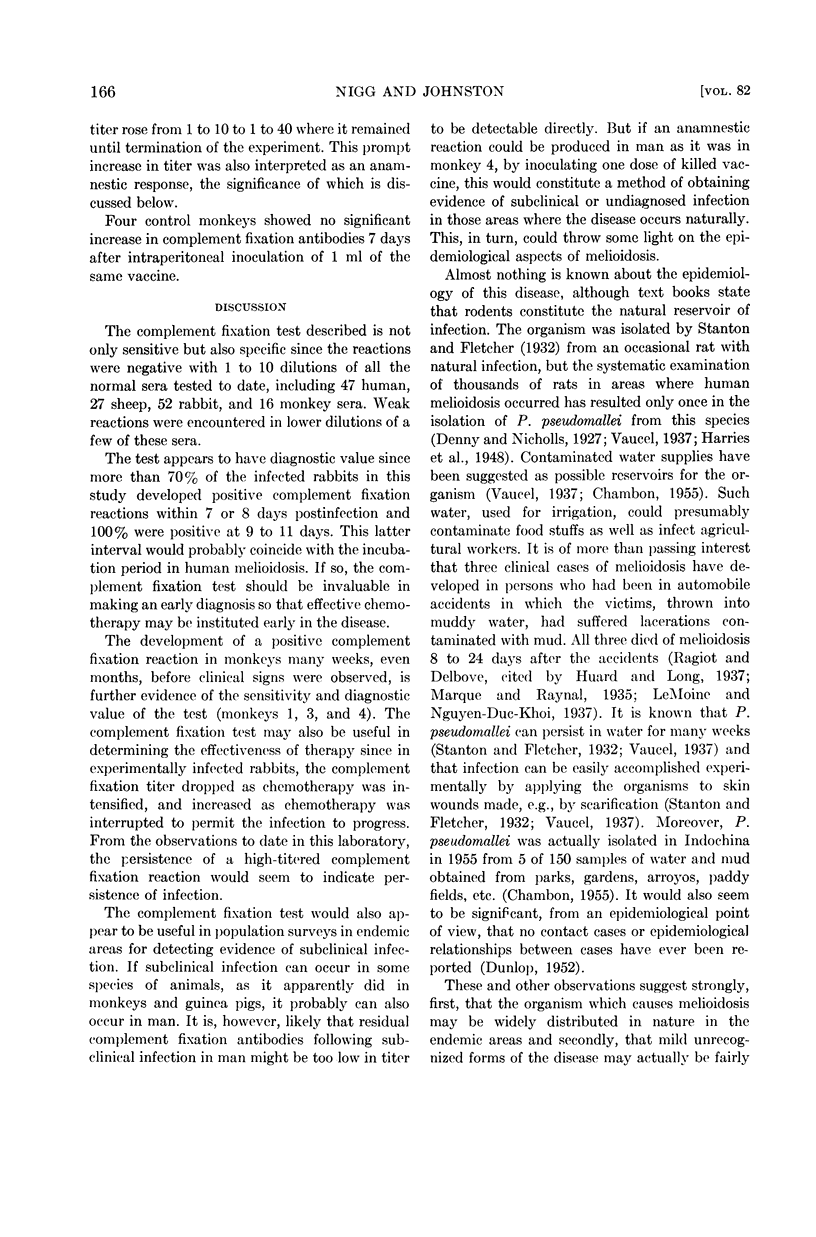
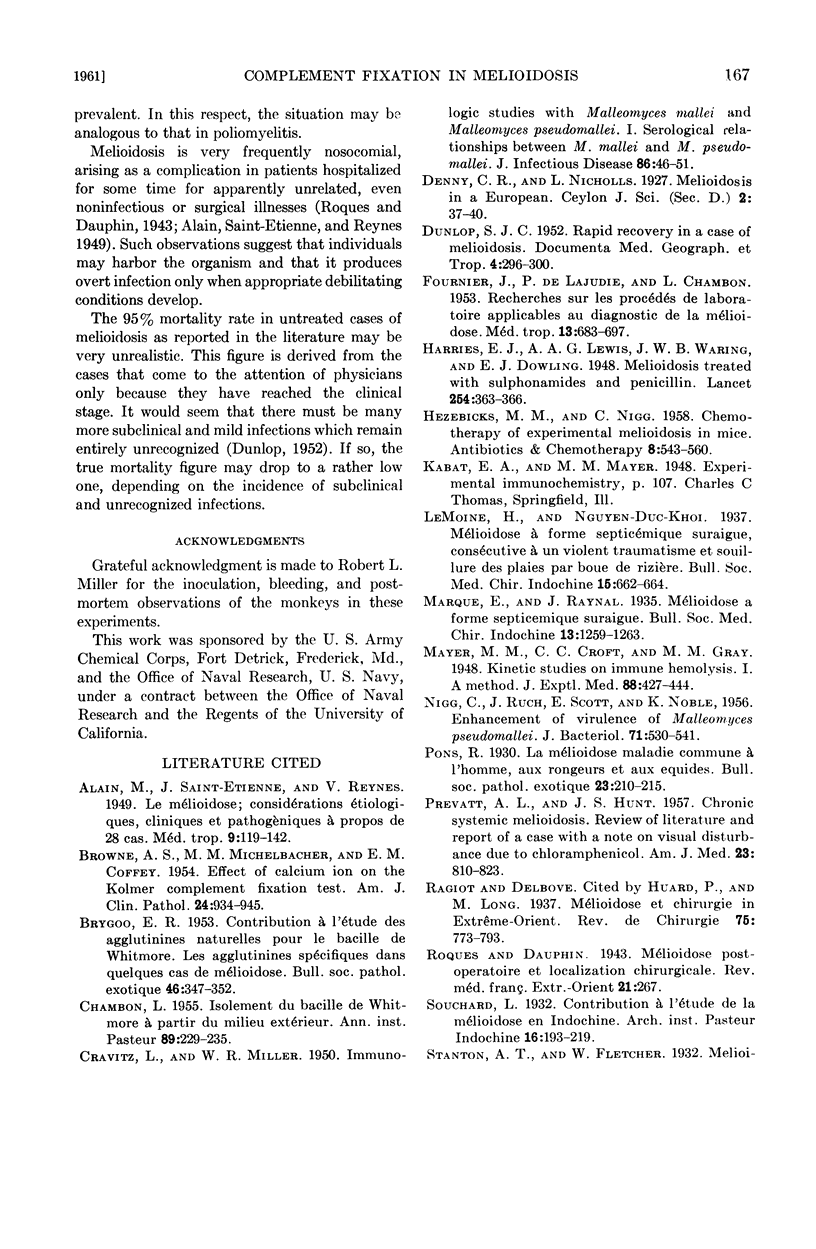
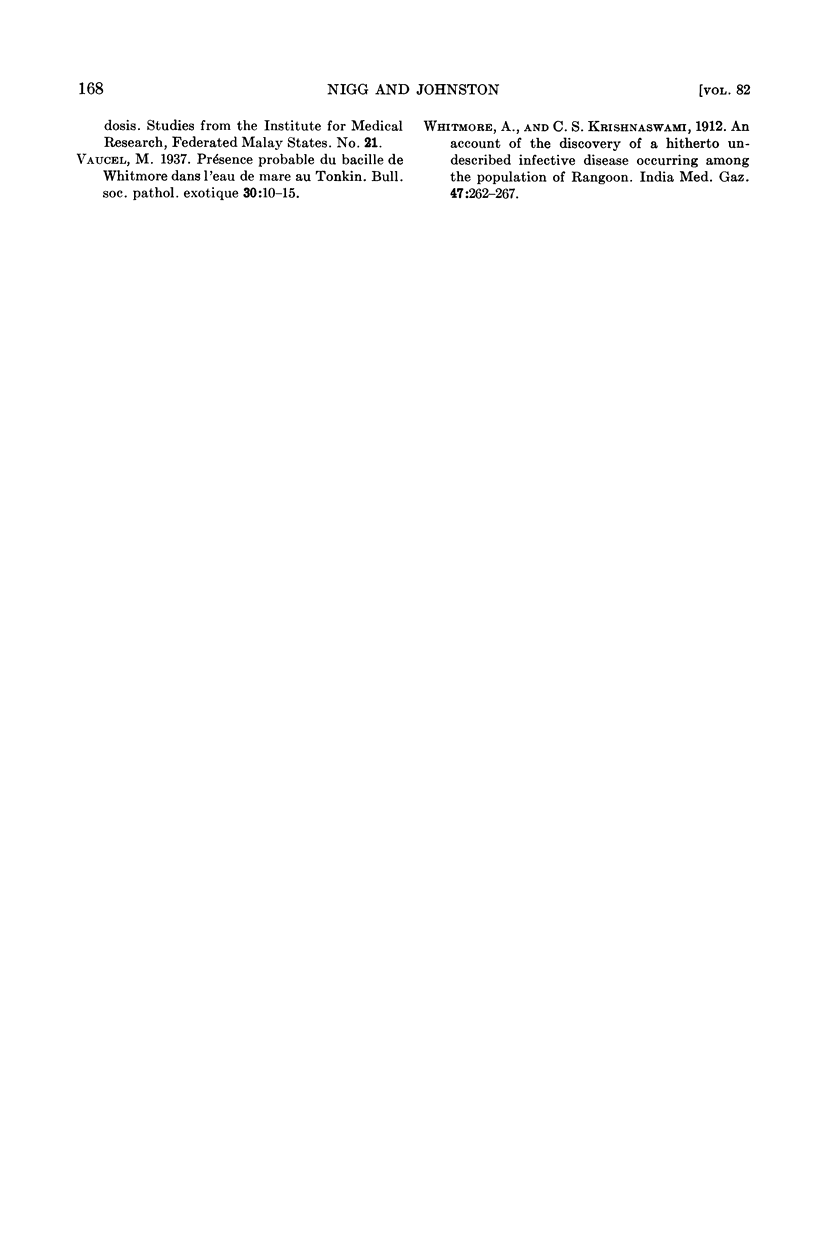
Selected References
These references are in PubMed. This may not be the complete list of references from this article.
- BROWNE A. S., MICHELBACHER M. M., COFFEY E. M. Effect of calcium ion on the Kolmer complement-fixation test. Am J Clin Pathol. 1954 Aug;24(8):934–945. doi: 10.1093/ajcp/24.8.934. [DOI] [PubMed] [Google Scholar]
- BRYGOO E. R. Contribution à l'étude des agglutinines naturelles pour le bacille de Whitmore; les agglutinines specifiques dans quelques cas de mélioidose. Bull Soc Pathol Exot Filiales. 1953;46(3):347–353. [PubMed] [Google Scholar]
- CHAMBON L. Isolement du bacille de Whitmore a partir du milieu extérieur. Ann Inst Pasteur (Paris) 1955 Aug;89(2):229–235. [PubMed] [Google Scholar]
- CRAVITZ L., MILLER W. R. Immunologic studies with Malleomyces mallei and Malleomyces pseudomallei; serological relationships between M. mallei and M. pseudomallei. J Infect Dis. 1950 Jan-Feb;86(1):46–51. doi: 10.1093/infdis/86.1.46. [DOI] [PubMed] [Google Scholar]
- DUNLOP S. J. C. Rapid recovery in a case of melioidosis. Doc Med Geogr Trop. 1952 Dec;4(4):296–300. [PubMed] [Google Scholar]
- FOURNIER J., DE LAJUDIE P., CHAMBON L. Recherches sur les procédes de laboratoire applicables au diagnostic de la melioidose. Med Trop (Mars) 1953 Sep-Oct;13(5):683–697. [PubMed] [Google Scholar]
- NIGG C., RUCH J., SCOTT E., NOBLE K. Enhancement of virulence of Malleomyces pseudomallei. J Bacteriol. 1956 May;71(5):530–541. doi: 10.1128/jb.71.5.530-541.1956. [DOI] [PMC free article] [PubMed] [Google Scholar]
- PREVATT A. L., HUNT J. S. Chronic systemic melioidosis; review of literature and report of a case, with a note on visual disturbance due to chloramphenicol. Am J Med. 1957 Nov;23(5):810–823. doi: 10.1016/0002-9343(57)90382-0. [DOI] [PubMed] [Google Scholar]


